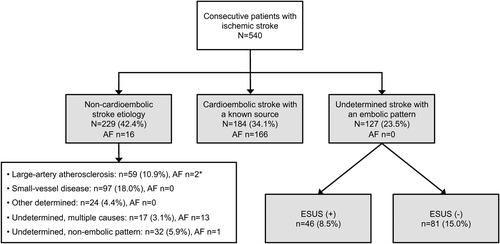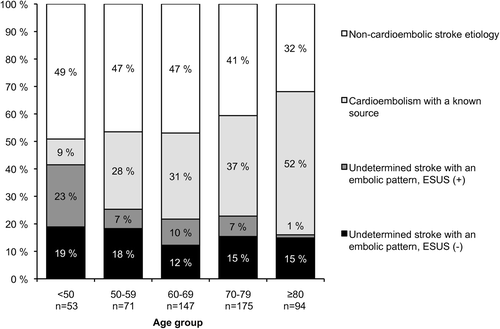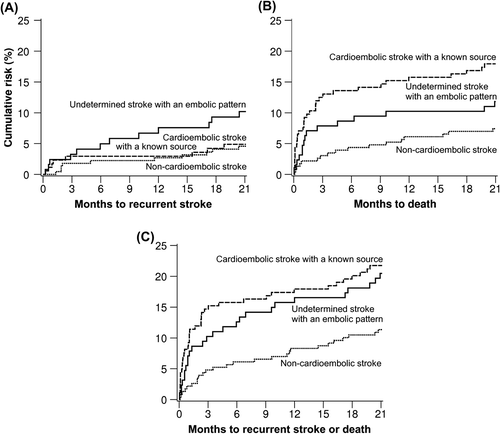Figures & data
Figure 1. Flow chart of the study population from admission to phenotype with frequency of atrial fibrillation (AF) among the subgroups. * The dominant etiology was intracranial atherosclerosis in a relevant artery in the 2 patients with AF.

Figure 2. Change of the patient phenotype with age (chi-square P < 0.001). ESUS = embolic stroke of undetermined source.



